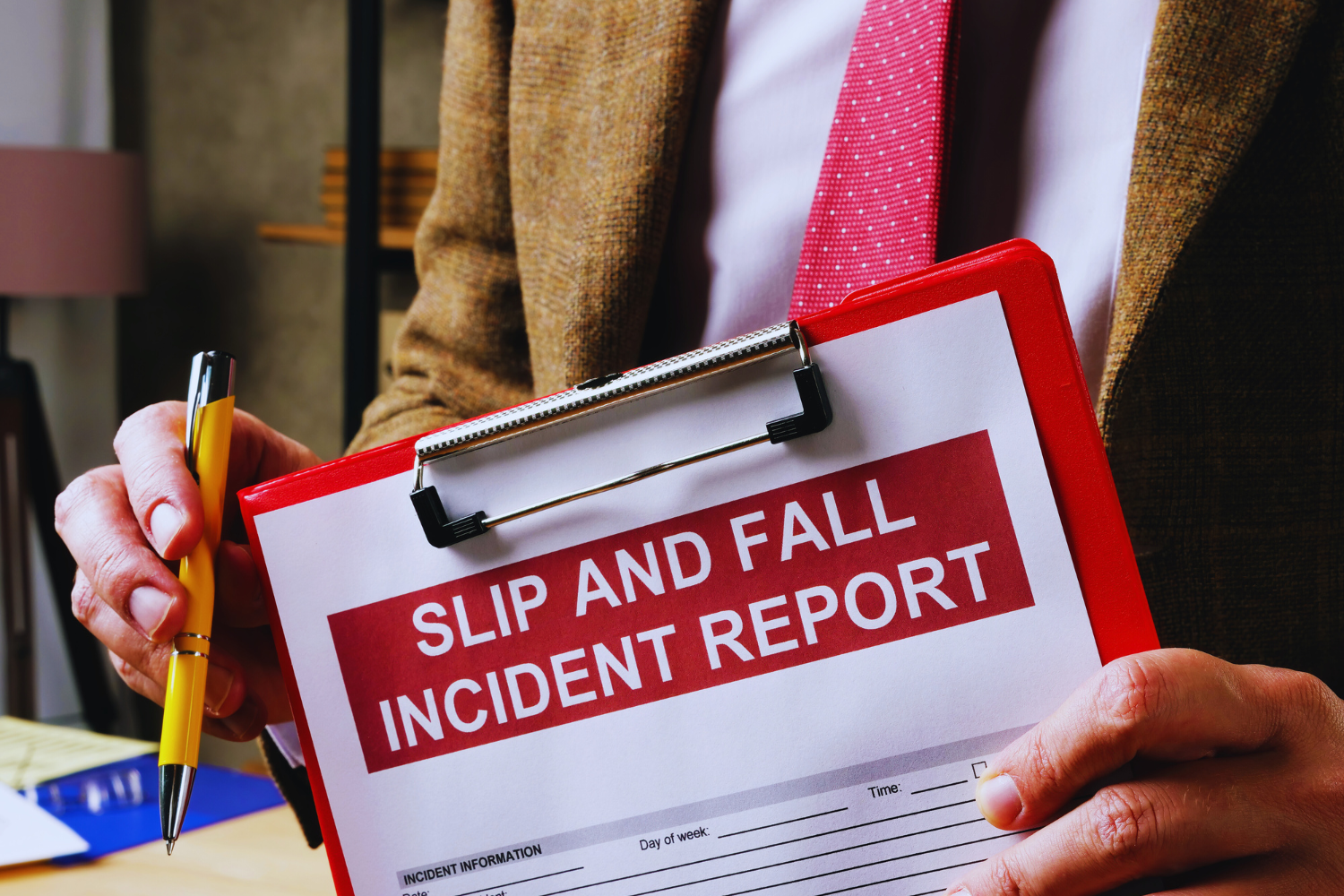
How Much is the Average Slip and Fall Settlement in Arizona?
 Slip and fall accidents can result in serious injuries, both physically and emotionally. Although property owners try to avoid slip and fall accidents, they do occur, which is why Arizona legislation allows injured parties to recover damages.
Slip and fall accidents can result in serious injuries, both physically and emotionally. Although property owners try to avoid slip and fall accidents, they do occur, which is why Arizona legislation allows injured parties to recover damages.
This can leave you wondering, “How much is the average slip and fall settlement in Arizona?” In this article, we’ll cover how much you can recover in damages and the factors that impact the payout.
How Much is the Average Slip and Fall Settlement in Arizona?
On average, slip and fall settlements in Arizona range from $15,000 to $50,000. However, the settlement you can expect to receive varies based on the circumstances and severity of the incident. For example, if the injury causes you to miss work, you will be able to recover damages for lost wages.
With any slip and fall claim, it’s important to work with a qualified attorney to maximize your settlement. Your attorney will be able to work through the circumstances of your case and give you an idea of what reasonable compensation looks like.
What Factors Impact Slip and Fall Settlements?
 Arizona slip and fall settlements are impacted by a few notable factors, including:
Arizona slip and fall settlements are impacted by a few notable factors, including:
Type of Injury
The type of injury you sustain will play a major role in your calculated settlement. For example, cutting your knee won’t receive as high of a payout as breaking your back. The more severe the injury, the higher the payout. After you become a victim of a slip and fall accident, it’s important to take the injury seriously, no matter how trivial. Always see a doctor and document everything.
Slip and Fall Evidence
Slip and fall cases require evidence to prove the environment contained hazardous conditions that could have been avoidable. Photos of the scene, witness testimonials, and video footage will all be reviewed. Collecting evidence is most valuable right after the incident occurred. It’s much easier to prove the floor was wet with actual images from the date of the accident rather than relying on your word alone.
Medical Bills
Medical bills resulting from the slip and fall will also impact your settlement. If you have $10,000 in medical bills, the court will use these amounts as a baseline when determining your settlement. Include both current and future medical bills when presenting them to the court.
Lost Income
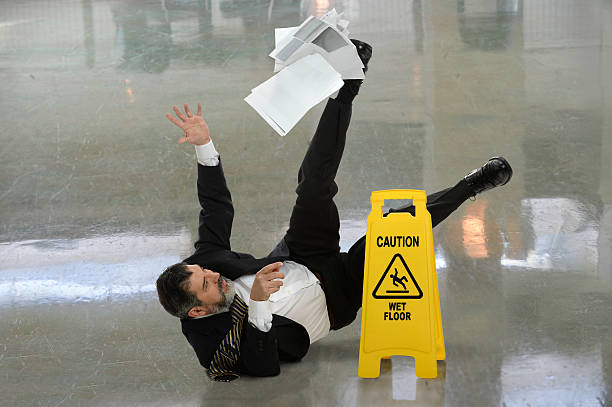 If the slip and fall accident causes you to lose income, you can work your lost wages into your settlement. Lost future earnings can also be included if you aren’t able to return to work in your normal position. The easiest way to prove lost wages is to pull recent paystubs showing the missed work.
If the slip and fall accident causes you to lose income, you can work your lost wages into your settlement. Lost future earnings can also be included if you aren’t able to return to work in your normal position. The easiest way to prove lost wages is to pull recent paystubs showing the missed work.
Summary
With the settlement range varying for slip and fall accidents, you want to be sure you maximize your payout, especially if you sustained serious injuries or lost wages. To learn more about how you can improve your settlement amounts, contact our team at The Law Office of Zayed Al-Sayyed today to schedule your free consultation.
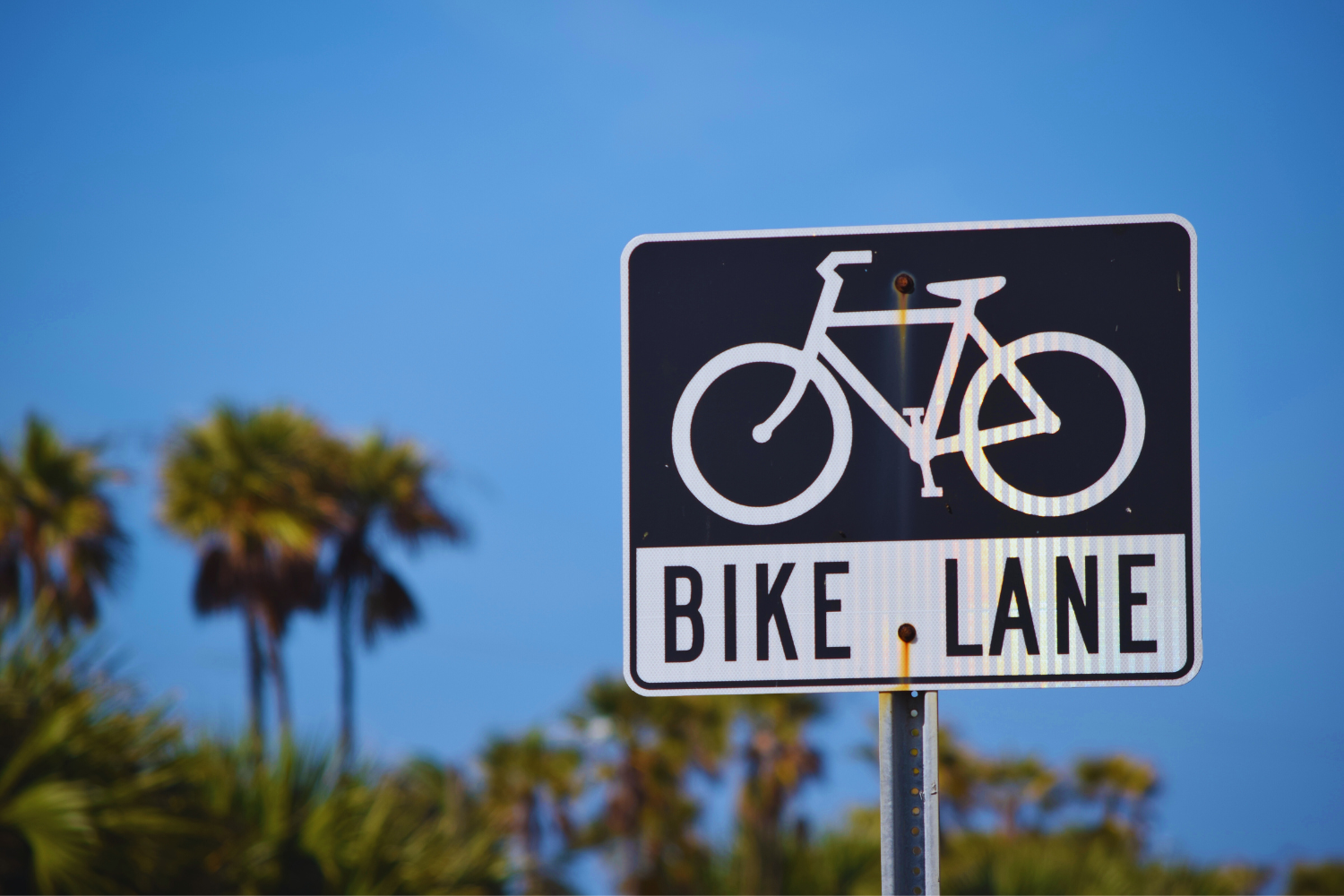
Do Bicycles Have to Stop at Stop Signs in Arizona 2024?
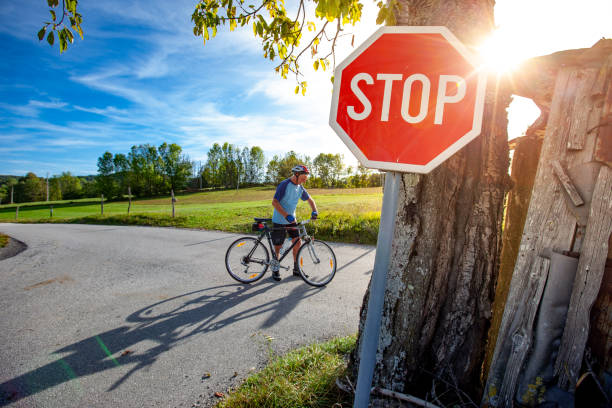 Do bicycles have to stop at stop signs in Arizona? Whether you are a leisure bike rider or a hard-core cyclist, it’s important to be aware of the Arizona riding laws and regulations you need to follow. Not only can abiding by the laws avoid tickets, fines, and penalties, but it also ensures your safety on the roadway.
Do bicycles have to stop at stop signs in Arizona? Whether you are a leisure bike rider or a hard-core cyclist, it’s important to be aware of the Arizona riding laws and regulations you need to follow. Not only can abiding by the laws avoid tickets, fines, and penalties, but it also ensures your safety on the roadway.
In this article, we’ll cover the regulations you need to follow when crossing intersections, stop signs, and lights, helping you ride safely and in compliance with Arizona statutes.
Do Bicycles Have to Stop at Stop Signs in Arizona in 2024?
Yes, Arizona bike riders must stop at stop signs in Arizona. Arizona bike riders have the same rights as Arizona drivers, meaning you must follow all traffic directions, including stop signs. According to ARS Section 28-812, individuals riding on the shoulder or roadway are granted all rights applicable to drivers. This means if you approach a stop sign or red light, you are required to stop.
Arizona Laws for Passing Other Bicyclists
ARS Section 28-815 also outlines the legality of passing other cyclists. You can legally pass another cyclist just like a car can pass another car. Let’s say one bicyclist is traveling slowly and is on the far right of the shoulder. If there are no obstacles and you can safely pass the slow-moving cyclist, you have the legal right.
Arizona Bicycle Laws for Making Left Turns
 Arizona bicyclists are allowed to make a left turn at an intersection when it is legally allowed, meaning they have a green light or a yellow light with no oncoming traffic or obstacles. Cyclists do need to avoid other objects, like parked vehicles, pedestrians, and animals, when making a left turn.
Arizona bicyclists are allowed to make a left turn at an intersection when it is legally allowed, meaning they have a green light or a yellow light with no oncoming traffic or obstacles. Cyclists do need to avoid other objects, like parked vehicles, pedestrians, and animals, when making a left turn.
Arizona Laws for Riding a Bicycle to Work or School
Arizona is a bike-friendly state, meaning you are permitted to commute to work or school using a bicycle. However, Arizona does regulate items you are allowed to carry while riding a bicycle. For one, you need to keep one hand on the handlebar at all times. You cannot carry anything that prevents you from holding the handlebar with one hand.
Penalties for Breaking Arizona Bike Laws
 Arizona Section 28-812 also outlines penalties for breaking Arizona bike laws. For one, if you are found responsible for a civil traffic violation, you could have your driver’s license suspended or revoked. In addition, Arizona can also impose fines and penalties for breaking other bike laws. For example, riding without a headlight at night could result in a fine of around $200.
Arizona Section 28-812 also outlines penalties for breaking Arizona bike laws. For one, if you are found responsible for a civil traffic violation, you could have your driver’s license suspended or revoked. In addition, Arizona can also impose fines and penalties for breaking other bike laws. For example, riding without a headlight at night could result in a fine of around $200.
Arizona’s Bicycle Lawyer
Keeping these regulations in mind when riding your bicycle is important to avoid fines and civil charges. However, if you’ve already received a ticket or been involved in an accident while riding your bicycle, it’s important to contact a qualified Arizona attorney right away. Our team at The Law Office of Zayed Al-Sayyed wants to be your trusted attorney. Reach out today to schedule your free consultation.

Do You Need a License to Ride a Bike in Arizona?
 Do you need a license to ride a bike in Arizona? Does Arizona have specific regulations for bike riders under 18? Are bike laws the same, even for motorized bikes? Before you take your bike on an Arizona roadway, it’s important you understand the safety laws Arizona has in place.
Do you need a license to ride a bike in Arizona? Does Arizona have specific regulations for bike riders under 18? Are bike laws the same, even for motorized bikes? Before you take your bike on an Arizona roadway, it’s important you understand the safety laws Arizona has in place.
In this article, we’ll cover the Arizona bike laws you need to know, including the license requirements, additional safety measures for bike riders under 18, and how Arizona treats motorized bikes.
Is a License Required to Ride a Bike in Arizona?
 No, cyclists are not required to have a license in Arizona. Even though Arizona bike riders are required to follow many of the same yield and passing regulations as motorists, you don’t need a license to ride a non-motorized bike.
No, cyclists are not required to have a license in Arizona. Even though Arizona bike riders are required to follow many of the same yield and passing regulations as motorists, you don’t need a license to ride a non-motorized bike.
With no license requirements, Arizona bicyclists are generally not required to register their bikes or pay any taxes. However, each locality will have different requirements, making it important to check with your local department of transportation.
What Laws Are Arizona Bike Riders Under 18 Required to Follow?
Arizona bike riders under 18 must wear a helmet when operating on Arizona roadways. In addition, all riders, regardless of age, must use hand signals to show their intentions. For example, if you are turning right, you would put out your right hand to signal that is the direction you are moving.
Similarly, Arizona bike riders must have an affixed seat to sit on and at least one brake that will cause the wheel to skid. A front headlight is also non-negotiable when riding a bike at night in Arizona. Other bike laws include having one hand on the handlebar and not holding onto a vehicle.
Do Motorized Bikes Follow the Same Regulations?
 Motorized bikes follow many of the same regulations as non-motorized bikes but with a few key differences. First, the motor must have a maximum piston displacement of forty-eight cubic centimeters or less and have a maximum speed of 20 miles per hour to be classified as a normal bicycle.
Motorized bikes follow many of the same regulations as non-motorized bikes but with a few key differences. First, the motor must have a maximum piston displacement of forty-eight cubic centimeters or less and have a maximum speed of 20 miles per hour to be classified as a normal bicycle.
Any motorized bicycles that do not fit these requirements may need to follow general motor vehicle requirements in licensing and operation. It’s also important to note that electric bicycles are also in a different category under Arizona statutes. Electric bicycles that have speeds greater than 25 miles per hour require a motorcycle license and have a different set of roadway rules.
Summary
Are you ready to go for a ride in Arizona? Arizona doesn’t require a license to ride a bike if it is non-motorized and you follow all of the safety guidelines. Even if you are careful when riding your bike, accidents can happen.
If you’ve been involved in a bike accident, contact one of our team members at The Law Office of Zayed Al-Sayyed today to schedule your free consultation. We can help you navigate the facts of your case to determine the next steps needed. Contact us today to learn more.

Do Bicycles Have to Stop at Stop Signs in Arizona?
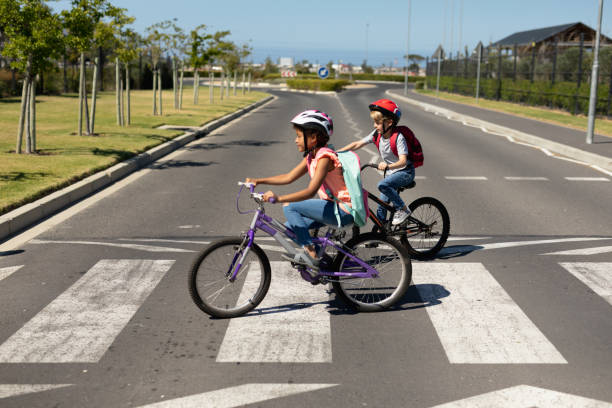 Do Bicycles Have to Stop at Stop Signs in Arizona? In some situations, Arizona bicyclists are subject to motor vehicle laws. In other instances, Arizona cyclists are given their own set of laws under Arizona Traffic Code Articles.
Do Bicycles Have to Stop at Stop Signs in Arizona? In some situations, Arizona bicyclists are subject to motor vehicle laws. In other instances, Arizona cyclists are given their own set of laws under Arizona Traffic Code Articles.
In this article, we’ll determine the laws Arizona cyclists need to follow, helping you stay safe and compliant on your next bike ride. If you have a question about a specific situation, contact our team at The Law Office of Zayed Al-Sayyed today to schedule your free consultation.
Do Bicycles Have to Stop at Stop Signs in Arizona?
Cyclists riding on the roadway or on the shoulder of the roadway have the same rights as Arizona drivers under Arizona Section 28-812. As a result, cyclists must come to a complete stop at stop signs and red lights. Other drivers will yield to bike riders in the same way they would another vehicle. Failure to stop at stop signs in Arizona can result in a traffic violation.
Making Left Turns
 Similar to motor vehicles, bicycles operating on the main roadway can make left turns. When preparing to make a legal left turn, the same vehicle regulations apply. The bike rider must signal for the turn and obey traffic guidelines, like turn signals. If the bicyclist needs to move into the left lane to avoid an object, pedestrian, or other safety hazard, the same concepts apply.
Similar to motor vehicles, bicycles operating on the main roadway can make left turns. When preparing to make a legal left turn, the same vehicle regulations apply. The bike rider must signal for the turn and obey traffic guidelines, like turn signals. If the bicyclist needs to move into the left lane to avoid an object, pedestrian, or other safety hazard, the same concepts apply.
Passing Other Cyclists
Bicyclists can pass other bicyclists if it is legally permitted on the roadway. Let’s say you are biking faster than another rider in front of you. If there are no cars or other obstacles in your way, you can move to the left and pass the cyclist. This is considered a legal pass under Arizona Section 28-815. When passing other cyclists, it’s important to understand that cars do not have to move over for you. Wait until there are no cars beside you to safely pass another cyclist.
Using a Bike to Commute
Many towns and municipalities in Arizona are bicycle-friendly. This means that it’s common for cyclists to commute to work or school using a bike. When commuting to work, be aware of the limitations of carrying items. Arizona Section 28-816 prohibits cyclists from carrying items that prevent them from keeping one hand on the wheel. Baskets and other storage compartments are permitted.
Summary
 Remember, Arizona cyclists have different requirements when riding on sidewalks and bike paths. This makes it important that you understand the regulations you are subject to. In addition, each jurisdiction and city can have other cyclist laws you need to abide by. For more information on Arizona bike laws, check out our other blog posts.
Remember, Arizona cyclists have different requirements when riding on sidewalks and bike paths. This makes it important that you understand the regulations you are subject to. In addition, each jurisdiction and city can have other cyclist laws you need to abide by. For more information on Arizona bike laws, check out our other blog posts.
If you’ve been in an accident as a bike rider, contact our team at The Law Office of Zayed Al-Sayyed today to schedule your free consultation. We can be your trusted expert when working through the Arizona court system to recover damages or limit liability.

Arizona Bicycle Laws 2024
 Bicycling is a popular outdoor activity in Arizona, from exercising to spending time with your family. Due to the climate in Arizona, bicycling can be a year-round activity. This makes it important to be aware of Arizona bicycle laws in 2024.
Bicycling is a popular outdoor activity in Arizona, from exercising to spending time with your family. Due to the climate in Arizona, bicycling can be a year-round activity. This makes it important to be aware of Arizona bicycle laws in 2024.
Whether you are a casual bike rider or an avid cyclist, we’ll cover everything you need to know about Arizona bicycle laws. Following the proper laws keeps both you and motorists safe, reducing the risk of serious accidents.
What is a Bicycle in Arizona?
According to Section 28-101(10), a bicycle is a device that is propelled by human power that a person rides on. This section further defines a bicycle as having two wheels that are more than sixteen inches in diameter. Arizona does classify racing wheelchairs, electronic assistant bikes with pedals, and tricycles as bicycles. Children’s bikes that contain small wheels are not considered bicycles.
Deciphering Arizona Bicycle Laws 2024
Arizona bicycle laws are outlined in Title 28 of the Arizona Revised Code. However, certain situations, like accidents, will draw in the state’s “common law.” Let’s go through some of the main Arizona bicycle laws.
Parent and Guardian Responsibility
Section 28-811 requires parents to make sure their children are following the laws any time they are riding bicycles on the highway or designated bicycle path.
Obeying Traffic laws
Arizona Section 28-812 makes it legal for bicycles to ride on traffic lanes if the cyclist follows the same laws as motorists. However, any traffic violations by cyclists will not result in the loss of license.
Bicycling Riding
Section 28-813 requires bicyclists to ride on a permanently affixed seat and avoid carrying more people than the bicycle is intended for. This means only one person can ride a bike at a time and riding on the handlebars is specifically prohibited.
Clinging to Vehicles
Arizona Section 28-814 makes it illegal to cling onto a moving vehicle.
 Bicycle Path Usage
Bicycle Path Usage
Section 28-815 outlines that cyclists must ride on the right-hand curb or edge of the roadway. However, if the cyclist is keeping up with traffic, passes another vehicle traveling in the same direction, is preparing for a left turn, moves to the center lane to avoid a hazard, or the lane is too narrow to travel, the cyclist does not need to follow this rule.
Carrying Items
Arizona does allow bicyclists to carry items in a basket or bag on the bicycle under Section 28-816. Additionally, one hand can be used to carry items.
Upgrading Bicycle Equipment
Arizona Section 28-817 requires bicycles to have a brake. In addition, headlights for nighttime riding, read reflectors or lights, and sirens or whistles may also be required.
Electric Bicycles
Section 28-819 clarifies that electric bicycles and electric standup scooters are considered bicycles under Arizona law.
Summary
Are you ready to take your bike out for a spin in Arizona? If so, it’s important to keep these laws in mind. If you are facing a bicycle-related incident, contact a qualified Arizona attorney right away. Our team at The Law Office of Zayed Al-Sayyed can help you work through your options.

Arizona Bicycle Helmet Laws
 Bicycling is a great way to enjoy the beautiful Arizona weather, spend time with families and friends, and get in your daily dose of exercise. However, before you put the pedal to the metal, it’s important that you’re aware of Arizona bicycle helmet laws.
Bicycling is a great way to enjoy the beautiful Arizona weather, spend time with families and friends, and get in your daily dose of exercise. However, before you put the pedal to the metal, it’s important that you’re aware of Arizona bicycle helmet laws.
Just like motorists have safety laws in place to prevent serious accidents, so do cyclists. In this article, we’ll cover the Arizona bicycle helmet laws you need to know to avoid an unexpected ticket and increase your safety.
Understanding Arizona Bicycle Helmet Laws
Arizona bicycle helmet laws date back to 1993, when Tucson required the use of helmets for cyclists under the age of 18. Soon after, other cities joined in the movement, with some jurisdictions expanding the laws to apply to motor scooters, off-road bikes, skateboards, and inline skates.
Some cities have advocated for changing legislation to require all cyclists, regardless of age, to wear a helmet, but these movements fell flat. Arizona state does not have any legislation in place requiring the use of helmets, but local jurisdictions may have other requirements Let’s explore some of the Arizona statutes in more detail.
 Arizona Section 28-813
Arizona Section 28-813
This section of Arizona laws requires bike riders to use an affixed seat when riding. In addition, Arizona bike riders cannot carry more people than the bike is designed for. For example, you can’t have a passenger ride on the handlebars of the bike.
Arizona Section 28-814
Arizona Section 28-814 prohibits bike riders from attaching themselves to vehicles, such as holding on while the vehicle is in motion.
Arizona Section 28-815
This section outlines that there cannot be more than two riders side-by-side when on the road. This law is not applicable to bike paths.
Arizona Section 28-816
Similar to operating a motor vehicle, texting while riding a bike is not allowed. The cyclist must have at least one hand on the handlebar at all times. Local jurisdictions might have more defined laws in place for texting while riding a bike.
Arizona Section 28-817
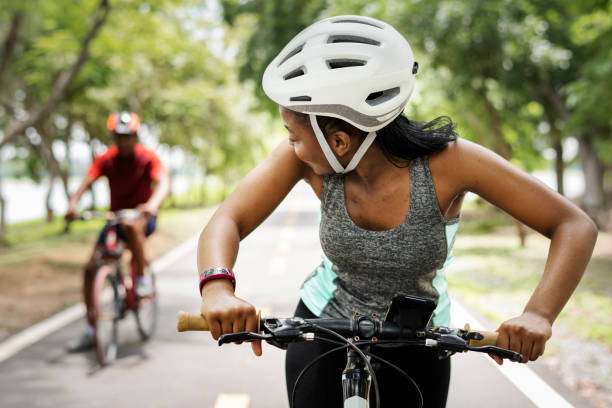 Riding a bike at night opens the door to added requirements under Section 28-817. For one, bicyclists must have a headlight that is visible from 500 feet attached to the front of the bike. In addition, the bike needs a reflector on the rear that is visible from 50 to 300 feet away. A light that emits red light on the rear is also required.
Riding a bike at night opens the door to added requirements under Section 28-817. For one, bicyclists must have a headlight that is visible from 500 feet attached to the front of the bike. In addition, the bike needs a reflector on the rear that is visible from 50 to 300 feet away. A light that emits red light on the rear is also required.
Summary
Following these guidelines is required when riding a bike in Arizona. However, these aren’t the only laws that you might be subject to. Individual cities and municipalities might have expanded requirements for bike riders. Understanding all of the laws you are subject to helps you maintain compliance and protects you from serious accidents.
If you were involved in an Arizona bike accident, it’s important to reach out to a qualified attorney right away. Working with a professional ensures you are maximizing the likelihood of a positive outcome. Contact the team at The Law Office of Zayed Al-Sayyed today to schedule your free consultation.

What is the Statute of Limitations on a Slip and Fall in Arizona?
 Were you involved in a slip and fall accident? Symptoms and side effects from slip and fall accidents can take a while to appear. This can leave you questioning, “What is the statute of limitations on a slip and fall in Arizona?”
Were you involved in a slip and fall accident? Symptoms and side effects from slip and fall accidents can take a while to appear. This can leave you questioning, “What is the statute of limitations on a slip and fall in Arizona?”
Understanding the statute of limitations is important to bring a timely case forward. After all, if you are experiencing side effects as a result of a slip and fall accident, receiving damages can help pay for medical bills and lost wages. In this article, we’ll cover everything you need to know about the slip and fall statute of limitations.
What is the Statute of Limitations on a Slip and Fall in Arizona?
 According to ARS 12-542, wrongfully injured parties have two years to file a claim. This two-year period starts on the date of the incident. For example, if you fell on a mopped surface without the proper signage on December 31, 2024, you would have until December 31, 2026 to file a timely claim.
According to ARS 12-542, wrongfully injured parties have two years to file a claim. This two-year period starts on the date of the incident. For example, if you fell on a mopped surface without the proper signage on December 31, 2024, you would have until December 31, 2026 to file a timely claim.
Filing a Slip and Fall Lawsuit on Someone’s Behalf
There are instances where you can file a slip and fall lawsuit on someone’s behalf. First, ARS 12-611 holds individuals and corporations liable when a slip and fall accident results in death. Wrongful death claims can be filed by surviving spouses, children, guardians, parents, and other representatives. Similarly, if a child is involved in a slip and fall accident, ARS 12-641 gives the parent the right to pursue personal injury legal action on behalf of the child.
How to Bring a Slip and Fall Lawsuit Forward
 Most slip and fall lawsuits seek damages as a result of a property owner’s negligence. To prove slip and fall liability, there are a few factors that must be identified. First, the party must be the rightful owner of the property where the slip and fall took place to be named as the defendant.
Most slip and fall lawsuits seek damages as a result of a property owner’s negligence. To prove slip and fall liability, there are a few factors that must be identified. First, the party must be the rightful owner of the property where the slip and fall took place to be named as the defendant.
Next, there needs to be a hazard or defect on the property that the owner should have fixed. This hazard or defect is also what caused the accident and injuries. Finally, actual damage must have occurred from the slip and fall accident. These damages can be both physical and emotional. Remember, to abide by the statute of limitation rules, a slip and fall claim must be brought forward within two years of the incident date.
Summary
Have you been involved in a slip and fall accident? Are you still within the statute of limitations? If so, contact The Law Office of Zayed Al-Sayyed today. We are the experts you need on your slip and fall case. Reach out today to schedule your free consultation.

What To Do After an Accident in Arizona?
Accidents are an unfortunate part of life. If you’ve been involved in an accident, you might be wondering what happens next. With more than 120,000 motor vehicle accidents in Arizona in 2022 alone, it’s important to be aware of the steps to take following an accident.
Contact the Authorities
 The first step is to call the authorities. Even if no one appears to be physically injured, it’s best to call the police right away. Having a police officer on the scene can alleviate tension between the involved parties, facilitate a smooth insurance claim, and help verify what actually happened. Resist the urge to just “exchange information.”
The first step is to call the authorities. Even if no one appears to be physically injured, it’s best to call the police right away. Having a police officer on the scene can alleviate tension between the involved parties, facilitate a smooth insurance claim, and help verify what actually happened. Resist the urge to just “exchange information.”
When the police arrive, be upfront and honest about the situation, even if you are at-fault. Be as specific and clear as possible to help the officer understand what happened. If you don’t know the answer to the question of an officer, don’t guess. Instead, say that you don’t know.
If you are involved in a major accident and are at fault, it can be helpful to have a Phoenix car accident lawyer by your side before giving any statements.
Document Relevant Details
Once the police are called, document any relevant details about the accident. This includes pictures of the damage to both vehicles. Don’t rely on the police or the other party to take photos. Have your own evidence.
Make sure you also take video of the scene of the accident, the vehicles involved, and your surroundings. You never know what you might be able to pick up on video that could help your case later on.
In addition, take pictures of other signs, landmarks, and injuries. Remember, you cannot interfere with the police’s investigation or intrude on another party receiving medical attention. Nevertheless, document the accident to the best of your abilities.
Reach Out to Your Insurance Company
 When an accident does occur, insurance companies will most likely be involved. Arizona requires drivers to have a minimum coverage of $25,000 for one person sustaining an injury, $50,000 for two or more individuals, and $15,000 for property damage.
When an accident does occur, insurance companies will most likely be involved. Arizona requires drivers to have a minimum coverage of $25,000 for one person sustaining an injury, $50,000 for two or more individuals, and $15,000 for property damage.
First, determine if you have any special coverage that can help pay for medical bills, like medpay. Medpay pays for immediate medical bills regardless of who is at fault. Before any benefits are paid out, your insurance companies will ask you questions about the accident.
Be truthful but be aware that insurance companies are generally looking for a reason to deny your claim. Like police statements, don’t give a formal statement to your insurance company without a Phoenix accident lawyer present.
Contact an Attorney
It can be difficult to keep track of all correspondence and documentation related to your accident. This is why many people enlist the help of a qualified accident attorney. Not only can your accident attorney help you communicate with the police and your insurance agent, but they can represent you in serious accidents that might require court proceedings.
Contacting an attorney is crucial if you are the injured party in an accident. Even if you are found partly at fault for the accident, you can recover damages. Contact our team at the Law Office of Zayed Al-Sayyed today to schedule your free consultation.

How Do I Report a Car Accident in Arizona?
 Were you involved in a car accident? Did you witness an accident? Both of these situations can leave you wondering, “How do I report a car accident in Arizona?” In this article, we’ll cover how to report a car accident in Arizona, the steps you should follow, and the details you need to know about filing police reports.
Were you involved in a car accident? Did you witness an accident? Both of these situations can leave you wondering, “How do I report a car accident in Arizona?” In this article, we’ll cover how to report a car accident in Arizona, the steps you should follow, and the details you need to know about filing police reports.
How Do I Report a Car Accident in Arizona?
The fastest way to report a car accident in Arizona is to dial 911. This will connect you with emergency personnel who can contact police officers and send first responders to the scene. Even if you aren’t involved in the accident, it’s best to contact the authorities. When an accident does occur, adrenaline runs high, and you want to be sure law enforcement is en route.
Arizona Accident Reporting Procedure
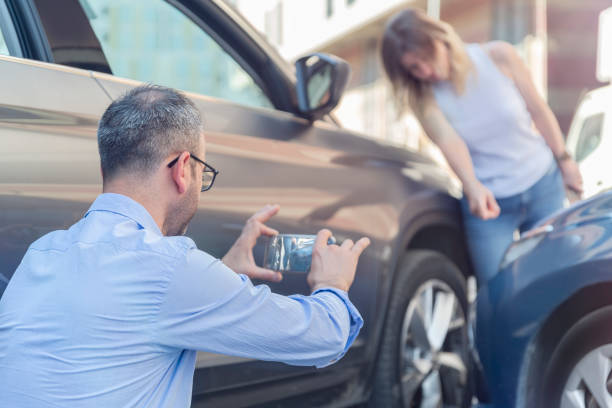
The Arizona Department of Transportation outlines the steps you should take following an accident. First, you need to move safely out of the way. If you are in the middle of the road and your vehicle is drivable, move to the shoulder. If your vehicle is totaled and you can safely exit the vehicle, move to a safe location off the roadway.
Next, offer assistance to other parties. Whether you are involved in the accident or first on the scene as a witness, you want to be sure everyone is alert and safe. If the accident is severe, you may need to wait until emergency responders arrive on the scene.
Once law enforcement arrives on the scene, you may need to answer questions and issue a statement about the accident. Even if you are a witness, your testimony and statement can be crucial in an investigation.
Filing a Police Report
 Although you aren’t always required to file a police report, you are required to stay on the scene until law enforcement clears you. If the accident is a minor fender bender, the officer might not file a report. However, for more severe accidents, a police report will almost always be created.
Although you aren’t always required to file a police report, you are required to stay on the scene until law enforcement clears you. If the accident is a minor fender bender, the officer might not file a report. However, for more severe accidents, a police report will almost always be created.
Instances when a police report is required include bodily injury or a fatality of an involved party, property damage that exceeds $1,000, or the issuance of a citation related to the accident. Fleeing the scene of an accident can result in felony charges and license suspension.
When the police report isn’t generated at the scene, you can contact your local police station, highway patrol, or county sheriff. Some jurisdictions also have online reporting resources. Having a police report filed eliminates the risk of the other party claiming you are at fault.
Contacting a Pheonix Accident Attorney
Whether you are directly involved in a car accident or were a witness, it’s important to have an attorney working alongside you. A Phoenix accident attorney can help you determine the best course of action following a car accident, including recovering damages. For more information about your specific situation, reach out to our team at the Law Office of Zayed Al-Sayyed today to learn more.

How Do I Find Out About Local Car Accidents?
 Unfortunately, car accidents are common, especially in Phoenix. This might leave you questioning, “How do I find out about local car accidents?” There are three main ways you can find out about local car accidents: hospitals, police departments, and personal contacts.
Unfortunately, car accidents are common, especially in Phoenix. This might leave you questioning, “How do I find out about local car accidents?” There are three main ways you can find out about local car accidents: hospitals, police departments, and personal contacts.
In this article, we’ll explore each of these three methods in more detail, giving you the insights needed to find out about local car accidents.
How Do I Find Out About Local Car Accidents?
Finding out if a family member or friend was in an accident can feel overwhelming. Here are three methods you can use:
Local Hospitals
In serious car crashes, injured parties will be transported to a local hospital or medical facility. This makes calling around to local hospitals the best place to start. Contact hospital and medical facilities near the area where your family member, friend, or loved one was traveling.
Remember, medical professionals can’t give out personal information due to the Health Insurance Portability and Accountability Act (HIPAA). However, they can generally tell you if a patient is at the facility if you have a name.
Police Departments
 The next avenue you can use to find out about local car accidents is through the police department. Most accidents will have a law enforcement officer on the scene, helping injured parties, creating a car accident report, and managing traffic.
The next avenue you can use to find out about local car accidents is through the police department. Most accidents will have a law enforcement officer on the scene, helping injured parties, creating a car accident report, and managing traffic.
You can try calling the police department to see if they have any recent calls about accidents in the area your loved one was traveling. There can be lags in information. For example, an officer might not have all of the details about who was involved in the accident right away.
Personal Contacts
Finally, you might be able to track down information about an accident from close contacts. If you are unable to contact the individual directly, call family members and friends. They might have information, especially if they are listed as an emergency contact.
Finding Information on Past Accidents
Most car accidents will require a law enforcement officer to generate a written report about the details, including the involved parties, the date, what caused the accident, any fatalities or injuries, and the damage occurred.

Check the website of your local police department to find recent accident reports. In some cases, you might need to request a report. Remember, pulling an accident report can take time. For example, it’s not uncommon for a report to be open for a few weeks while officers conduct investigations.
Nevertheless, obtaining a copy of your car accident report can help you submit insurance claims and be used as evidence in court proceedings. It’s important to keep in mind that police reports aren’t legal verdicts on the accident. If you believe you or your loved one wasn’t at fault for the accident or are trying to recover damages, it’s best to contact a Phoenix accident attorney.
Reach out to our team at the Law Office of Zayed Al-Sayyed today to schedule your free consultation.
